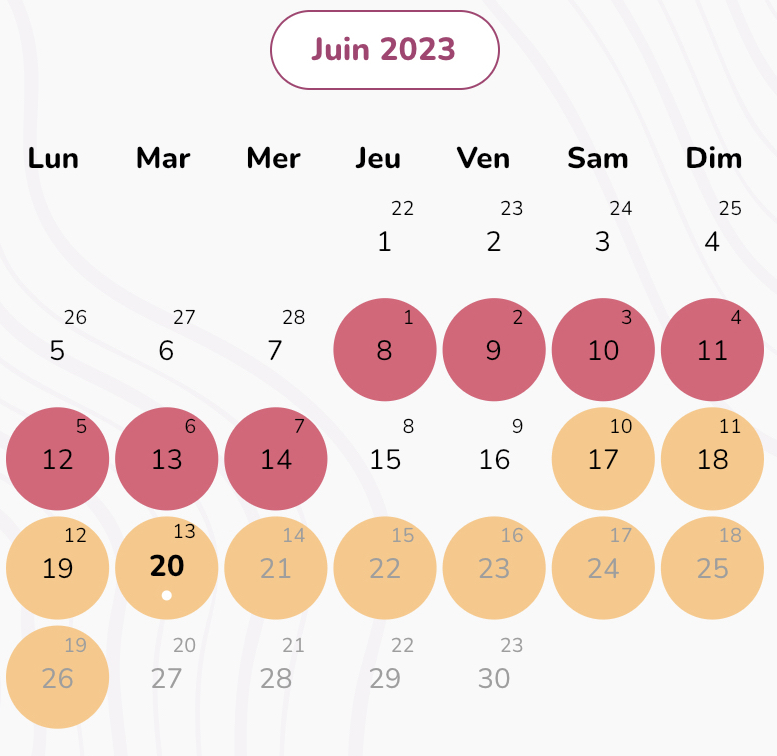How to calculate your fertile period?
From the moment she starts menstruating, a woman can become pregnant if she has sexual intercourse during certain days of her cycle. This time is called the “fertile period” and lasts around 7 days each month.
You can calculate this period by observing your body and following your cycle. There are several methods of calculation:
- Identifying the moment of ovulation (14 days before your period)
- Observing white discharge and cervical mucus (transparent, abundant and sticky at the time of ovulation)
- Take your temperature every day
Ovulation lasts only 16 to 32 hours. This is the time of the cycle when the chances of becoming pregnant are the highest. The fertile period begins shortly before ovulation and ends shortly afterwards.
What is ovulation?
Ovulation is what happens inside your lower abdomen. It is the expulsion of an ovum (a small egg) by one of the two ovaries into the Fallopian tubes. The ovum does not last long. During this period, the ovum on its way to the uterus can be fertilized by a sperm cell and can form an egg that will become a future baby. But for this to happen, there has to be sexual intercourse (the man’s sex entering the woman’s vagina).
How do you calculate your fertile period?
In order to know when the fertile period is, it is important to know when ovulation occurs. Some methods use the appearance of white discharge (cervical mucus). During the fertile period, cervical mucus changes a lot. It is sticky, abundant, transparent and stringy. During the non-fertile period, it is opaque and dark.
How do you calculate your ovulation date?
The date of ovulation is calculated from the length of your menstrual cycle and the date of your next period. If your cycle is regular, ovulation usually takes place 14 days before your period.
There are various methods for finding out when ovulation occurs. The most common method is to check your body temperature, which changes when you ovulate. If you take your temperature every morning at the same time before getting up, this is one way of detecting your ovulation day. Throughout your cycle, and even during your period, your body temperature is above 37°. But during ovulation, your body temperature drops by at least 0.5°C. This is when you have the best chance of getting pregnant if you have sexual intercourse. The temperature then rises again until the next ovulation. However, temperature monitoring is not a way of predicting future ovulations.
Another way to tell when you’re ovulating is to feel a little pain in your stomach. Sometimes these pains are accompanied by light pink bleeding. This means that you are ovulating.
It’s a good idea to combine these two methods to get a more reliable idea of when you’re ovulating. I also recommend that you monitor your cycle and note the signs you observe on your Weerwi calculator. This will help you predict your future fertility period.
How can I avoid getting pregnant?
To become pregnant, a man and a woman must have sexual intercourse during the fertile period.
There are several ways to avoid getting pregnant:
- Not having sexual relations;
- Use medical contraception (pill, implant, injection). In this case, you should consult a doctor, midwife or gynecologist;
- Use a condom during sexual relations;
- Be aware of your cycle and fertile period by avoiding sexual relations during the fertile period, particularly ovulation.
Sources : Toubibadakar.



